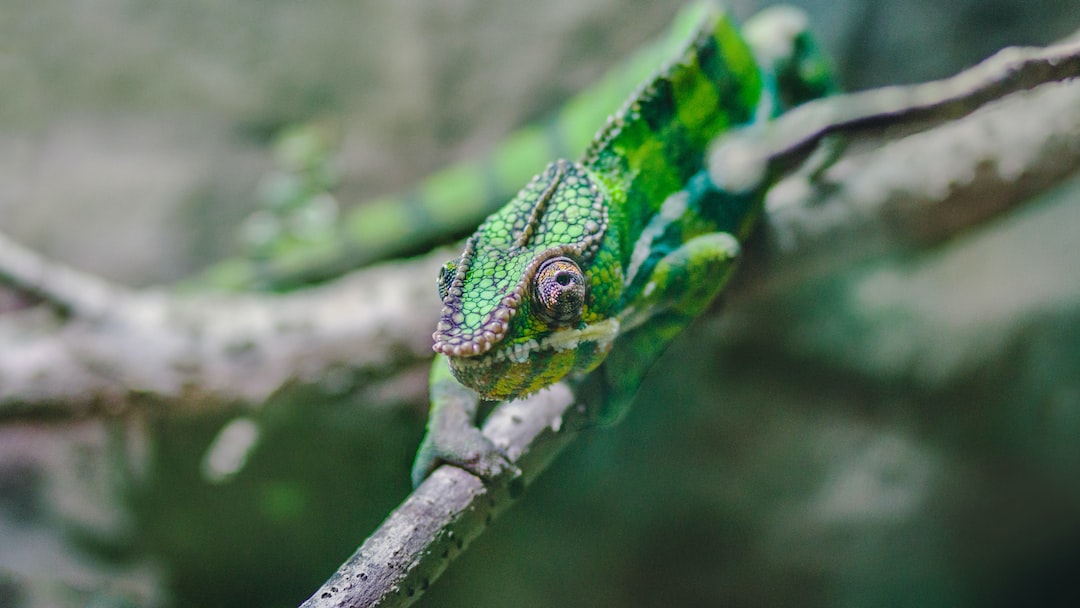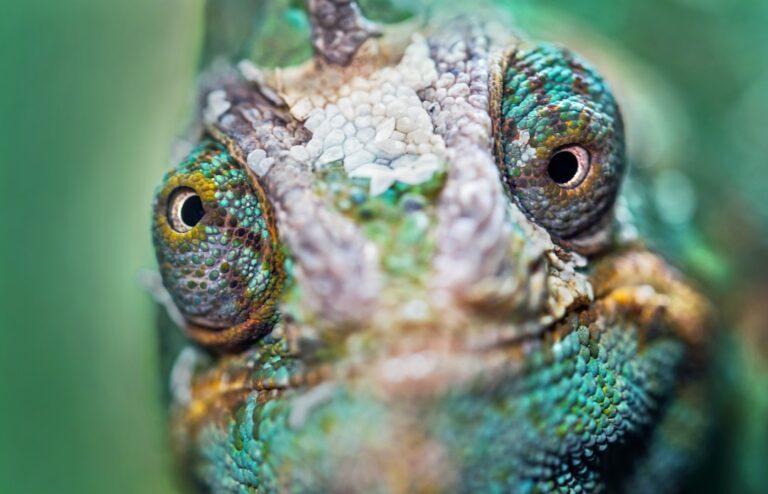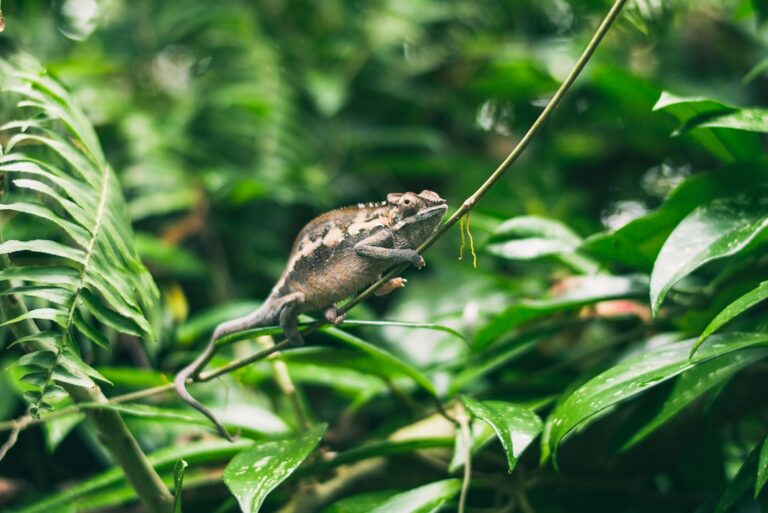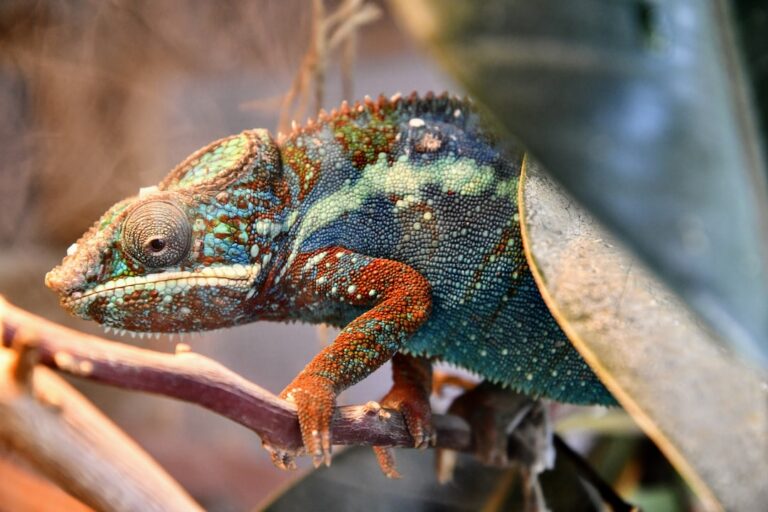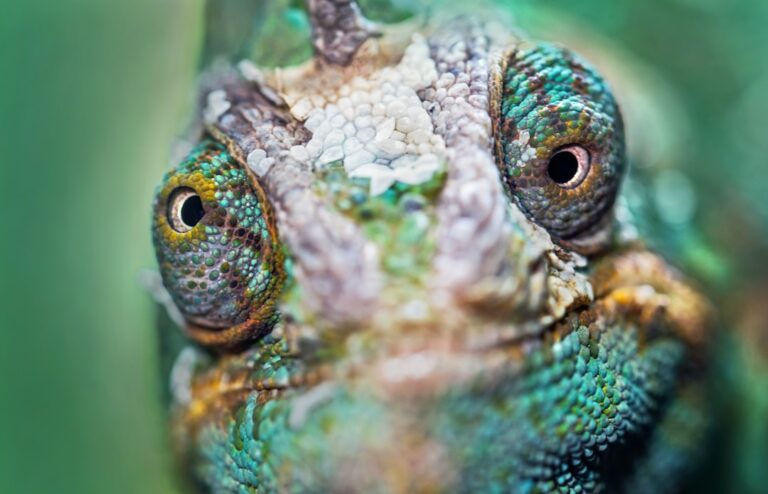Why Do Chameleons Rock Back And Forth?
Chameleons are fascinating creatures known for their ability to change color and blend into their surroundings. They belong to the reptile family and are found in various parts of the world, including Africa, Madagascar, and parts of Asia and Europe. Chameleons have unique characteristics that set them apart from other reptiles. They have a prehensile tail, independently moving eyes, and specialized feet that allow them to grip onto branches and climb with ease.
One of the most intriguing aspects of chameleon behavior is their ability to change color. This is not just for camouflage, but also for communication and thermoregulation. Chameleons can change their color to express emotions such as fear, aggression, or courtship. They can also change color to regulate their body temperature by absorbing or reflecting sunlight.
Table of Contents
The purpose of rocking back and forth in chameleons
One behavior that is commonly observed in chameleons is rocking back and forth. This behavior involves the chameleon swaying its body from side to side while perched on a branch or leaf. It may seem odd at first, but there are several potential reasons for this behavior.
One possible explanation for rocking behavior is that it helps chameleons maintain balance while perched on unstable surfaces. Chameleons often live in trees and spend a significant amount of time climbing and moving around branches. Rocking back and forth may help them adjust their center of gravity and maintain stability on these surfaces.
Another reason for rocking behavior could be related to digestion. Chameleons have a slow metabolism and rely on external heat sources to regulate their body temperature. Rocking back and forth may help stimulate digestion by promoting blood flow to the digestive organs.
How chameleons use rocking to communicate with other chameleons
Chameleons are not known for their vocalizations, so they rely heavily on body language to communicate with each other. Rocking back and forth is one way that chameleons use body language to convey messages to other chameleons.
Rocking behavior can be a sign of aggression or territoriality. When two male chameleons encounter each other, they may engage in a rocking display to establish dominance and defend their territory. The rocking motion can be accompanied by other aggressive behaviors such as hissing, puffing up their bodies, and displaying their vibrant colors.
On the other hand, rocking behavior can also be a sign of submission or appeasement. When a subordinate chameleon encounters a dominant individual, it may rock back and forth as a way of signaling that it poses no threat and is not challenging the dominant individual’s authority.
The role of rocking in chameleon courtship and mating rituals
Rocking behavior also plays a significant role in chameleon courtship and mating rituals. Male chameleons often perform elaborate displays to attract females. Rocking back and forth is one of the behaviors that males use to court females.
During courtship, the male will approach the female and begin rocking back and forth while displaying his vibrant colors. This rocking motion is believed to be a visual signal to the female that the male is interested in mating. The male may also bob his head up and down or perform other complex movements as part of his courtship display.
If the female is receptive, she may respond by rocking back and forth as well. This reciprocal rocking behavior is an important part of the mating ritual and helps establish a connection between the male and female.
The connection between rocking and territorial behavior in chameleons
Chameleons are known for their territorial behavior, especially among males. They will fiercely defend their territory from intruders, often engaging in aggressive displays such as rocking back and forth.
Rocking behavior is used by chameleons to establish and defend their territory. When a male chameleon encounters another male in its territory, it may engage in a rocking display to assert its dominance and warn the intruder to stay away. The rocking motion, along with other aggressive behaviors, serves as a visual signal to communicate the chameleon’s territorial boundaries.
If the intruder does not heed the warning and continues to encroach on the territory, a physical confrontation may ensue. This can involve biting, lunging, and even grappling with each other. The rocking behavior is an important part of the territorial defense strategy and helps chameleons establish their dominance without engaging in physical combat.
How chameleons use rocking to adjust their body temperature and conserve energy
Chameleons are ectothermic animals, which means they rely on external heat sources to regulate their body temperature. Rocking back and forth is one way that chameleons can adjust their body temperature and conserve energy.
When a chameleon is basking in the sun, it may rock back and forth to expose different parts of its body to the sunlight. This rocking motion helps distribute heat evenly across the chameleon’s body, ensuring that all areas receive an adequate amount of warmth.
By adjusting their body position and rocking back and forth, chameleons can also maximize their exposure to sunlight without expending too much energy. This allows them to efficiently absorb heat and conserve energy for other essential functions such as hunting or reproduction.
The influence of environmental factors on chameleon rocking behavior
Environmental factors such as temperature and humidity can have a significant impact on chameleon behavior, including rocking behavior.
Temperature plays a crucial role in chameleon thermoregulation. Chameleons rely on external heat sources to regulate their body temperature, so they are highly sensitive to changes in temperature. If the temperature is too low, chameleons may engage in rocking behavior to increase their exposure to sunlight and warm up their bodies. Conversely, if the temperature is too high, chameleons may rock back and forth to seek shade and cool down.
Humidity is another important environmental factor that can influence chameleon behavior. Chameleons require a certain level of humidity to maintain healthy skin and respiratory function. If the humidity is too low, chameleons may engage in rocking behavior to increase their exposure to moisture or seek out areas with higher humidity. On the other hand, if the humidity is too high, chameleons may rock back and forth to dry off their bodies and prevent excessive moisture buildup.
The potential evolutionary reasons for chameleon rocking behavior
The rocking behavior observed in chameleons may have evolved as a result of various selective pressures over time.
One possible reason for the development of rocking behavior is its role in communication. Chameleons rely heavily on body language to convey messages to each other, and rocking back and forth may have evolved as a visual signal to communicate dominance, submission, or courtship intentions.
Another possible reason for the development of rocking behavior is its role in thermoregulation. Chameleons are ectothermic animals and rely on external heat sources to regulate their body temperature. Rocking back and forth may have evolved as a way for chameleons to efficiently absorb heat and distribute it evenly across their bodies.
Additionally, the development of rocking behavior may be influenced by the chameleon’s arboreal lifestyle. Chameleons spend a significant amount of time climbing and moving around branches, which can be unstable surfaces. Rocking back and forth may have evolved as a way for chameleons to maintain balance and stability while perched on these surfaces.
The potential health implications of excessive rocking in captive chameleons
While rocking behavior is a natural and normal behavior in chameleons, excessive or repetitive rocking may be a sign of stress or illness in captive chameleons.
Chameleons are highly sensitive animals and can easily become stressed in captivity if their needs are not met. Factors such as improper enclosure setup, inadequate temperature or humidity levels, and lack of environmental enrichment can contribute to stress in captive chameleons. Excessive rocking may be a manifestation of this stress and should be taken as a sign that something is wrong.
In addition to stress, excessive rocking may also be a symptom of illness or injury. Chameleons are susceptible to various health issues, including respiratory infections, metabolic bone disease, and parasites. If a chameleon is exhibiting excessive rocking along with other abnormal behaviors or physical symptoms, it is important to seek veterinary care to determine the underlying cause.
Conclusion and further research on chameleon behavior
In conclusion, chameleons are fascinating creatures with unique behaviors that set them apart from other reptiles. Rocking back and forth is one of the behaviors commonly observed in chameleons and serves various purposes such as communication, courtship, thermoregulation, and territorial defense.
Further research on chameleon behavior is needed to gain a deeper understanding of their complex behaviors and their implications for captive chameleons. This research can help improve the welfare of captive chameleons by providing guidelines for proper enclosure setup, temperature and humidity management, and environmental enrichment. Additionally, further research can shed light on the potential health implications of excessive rocking in captive chameleons and help identify ways to prevent or treat these issues.
Overall, the study of chameleon behavior is an exciting field with many unanswered questions. By continuing to explore and research these fascinating creatures, we can gain a better understanding of their unique behaviors and contribute to their conservation and well-being.
If you’re curious about the fascinating behavior of chameleons, you might also be interested in learning why turtles slap each other. This intriguing article explores the reasons behind this behavior and provides insights into the social dynamics of turtles. To find out more, check out Why Do Turtles Slap Each Other?

